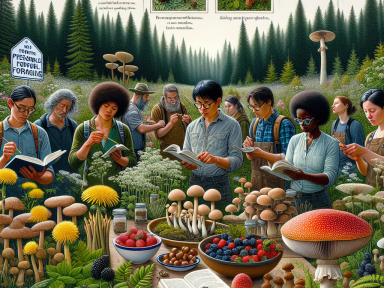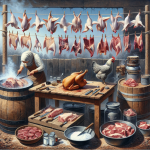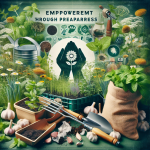Understanding the Art of Foraging
In an era of supermarkets and online food delivery, the notion of foraging for your own food may seem archaic or even unnecessary to some. However, for those who truly appreciate the concept of self-reliance and preparedness, foraging is a crucial skill set. Not only can it provide you with a vast array of nutritious edibles, but it serves as a vital lifeline in a survival situation.
Recognizing Edible Plants and Fungi
Perhaps the most fundamental aspect of foraging is the ability to identify edible plants and fungi. Ignorance or misinformation can have grave consequences, from mild indigestion to severe poisoning, and even death. It’s not about causing paranoia, rather the goal is to emphasize the level of seriousness attached to this skill.
- Dandelions: Considered a weed by many, every part of the dandelion plant is edible and full of vitamins.
- Wild Asparagus: Similar in appearance to the asparagus we buy from stores, wild asparagus can be found across North America and Europe.
- Morel Mushrooms: Distinctive in shape, morel mushrooms are a sought-after delicacy. Importantly, always cook them—raw morels can be toxic.
Foraging Etiquette
Along with the vital knowledge of what to forage, it is crucial to understand how to forage responsibly. Damaging the environment or stripping it bare of resources is an unethical practice and, if widespread, it could lead to devastating effects.
- Don’t Overharvest: As a general rule, never harvest more than a third of a particular plant population.
- Leave No Trace: Respect the habitat you’re in. Make sure you leave it undisturbed for future generations and wildlife.
- No Trespassing: Always seek permission if you’re foraging on private land.
The Hidden Treasures of Nature: Nuts and Berries
Besides plants and fungi, foraging for nuts and berries can be hugely rewarding. They are a rich source of nutrients, but the trick is in accurate identification.
- Hazelnuts: Found on small, bushy trees, hazelnuts are a great source of protein and monounsaturated fats.
- Blackberries: Common across the globe, they can be eaten raw or used in cooking.
- Blueberries: Found in the wild, they are smaller but more flavorful than their commercial counterparts.
Master This Lifesaving Skill
Knowing how to forage for food in the wild is an essential skill for any serious advocate of survival, self-reliance, and homesteading. The seemingly benign activity of foraging not only helps build a profound connection with nature but also prepares you for scenarios where survival becomes paramount. The wild is a trove of life-sustaining treasures; it’s on us to seek them out responsibly and respectfully. Wield the power of knowledge, not fear, and embrace every step of your self-reliance journey. Let the art of foraging be your guiding star.




GIPHY App Key not set. Please check settings